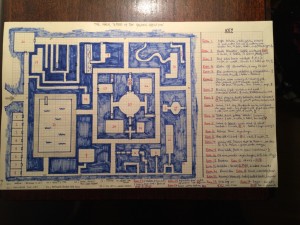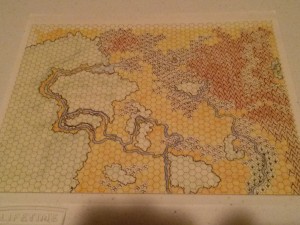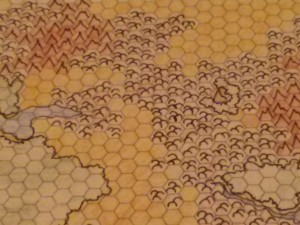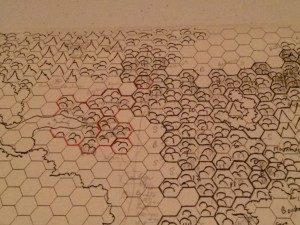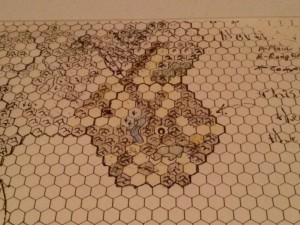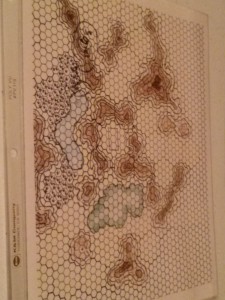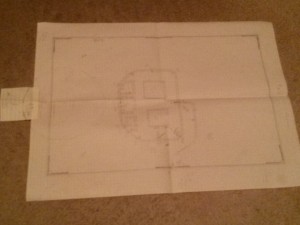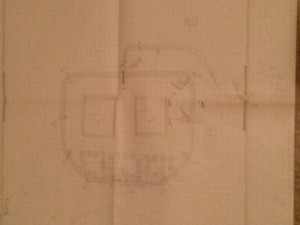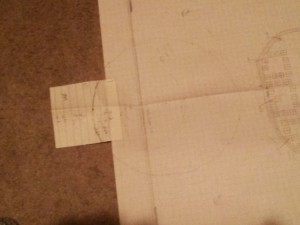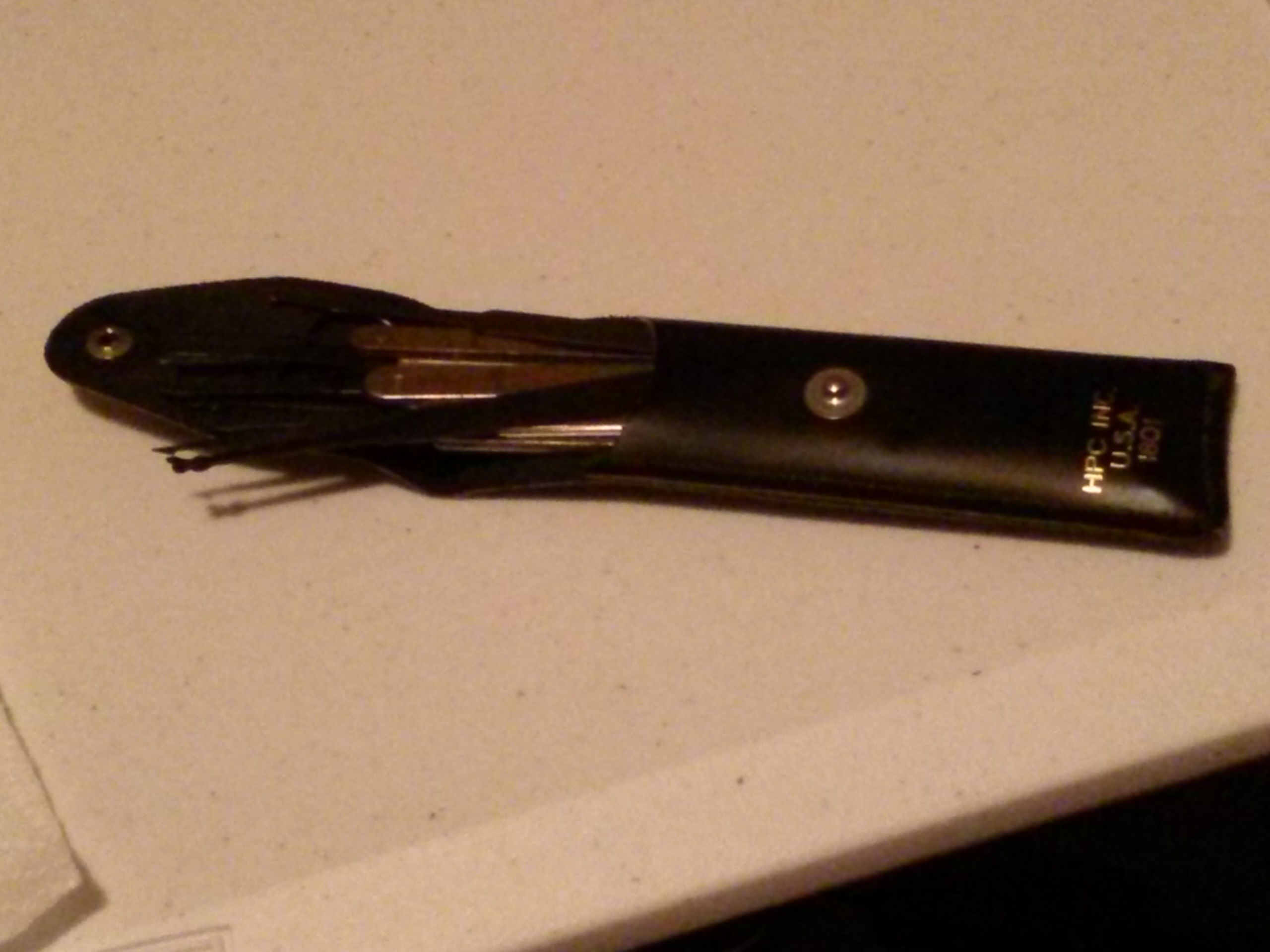A Flickr post of a picture of the Darien Chest on the OSR Community Page got me to thinking about locks in FRPGs and I decided to write about them. My father was a locksmith, so I have some knowledge of this. Dad ran his shop out of the garage. I remember many cold and frozen nights going out to one of the truck stops out by the interstate to help some traveler who locked their keys in their car or broke their key in the ignition. Many locksmith tools require a fine touch or are small enough that gloves get in the way. Ice cold metal on bare skin in the middle of a snowstorm in January is not fun. I would have rather held too hot to touch metal in a hot and humid car in July with sweat in my eyes.
If you think weather doesn’t matter in a game, imagine a thief encountering a fancy lock that requires all his skill and his fingers are numb from the cold. Would you give the thief a negative modifier? Would you let the thief, if the player thought of it, warm his hands with a torch or lantern to negate the effect? What about a lingering Wall of Ice spell? It gives off a lot of cold and in AD&D a falling/breaking Wall of Ice causes damage like an Ice Storm. It would also cause a room and any metal, including locks, tools, and hands to be cold.
Locks prior to the industrial age, with its uniformity and interchangeable parts meant that no two locks were identical without a massive amount of effort on the part of the locksmith. Thus, picking locks is a new experience for each one encountered. Locks were of iron and perhaps brass. Iron locks tended to be bigger with less fine mechanisms. The use of brass in locks lead to smaller locks and keys, but it is only industrialization that makes the abundance of small and secure locks that we have with us today. Prior to industrialization, only the rich could afford locks. How many peasants have a lock other than a bar on the door? Locks could be made out of any material, wood, plastic, glass, metal, etc. I once made a crude lock with Legos, but it was far from secure.
Perhaps the same locksmith will use a similar design, but barring a lot of time to make them identical, there would still be some variation. Also as a locksmith becomes more skilled and refines that skill over time, the flaws and weaknesses in older designs will be addressed. Students of the same locksmith would show that influence, but the master would point out the most obvious flaws, perhaps reserving his best ideas to give him an edge. Students that exceed the master would have better locks.
Keys or means of opening the locks would be varied. There could be a combination of dials, like modern safes, or knobs, buttons, slides, or switches. Keys could look like we think of skeleton keys, or could have a variety of shapes and features to disguise their true nature and means of releasing a lock. That would be the strictly mechanical and technological means. There could be traps incorporated into a mechanism on a chest, door, or other item to be secured. Traps could be merely mechanical and designed to frighten, draw attention, wound, or even kill. In addition to mechanisms, there could be various poisons to incapacitate/capture or flat out kill any thief, depending on the nature of the contents or anticipated contents to be secured.
In a fantasy setting, there would be magical means. A Wizard Lock spell is proof against all but magic or great force. Knock is a near universal key. Simply casting some spell that gives a hint of magic to confound wizards would be a neat trick, like Nystul’s Magic Aura. I’m an AD&D player/DM so I go with the names of spells that I am familiar with.
Keep in mind that a lock is used to keep others out and that lost keys are a big deal. In my online game our group found a simple small coffer with no lock, and one player went into overdrive looking for secret panels and a locking mechanism. This was a decorative item that a suspicious player latched onto the idea of more importance than necessary, and I am sure was of great entertainment to the DM. On the other hand, in AD&D, a thief can’t try to pick a lock he has failed to pick until he has gained a level. From the perspective of someone with locksmith training, that is not very realistic. A locksmith can keep at it until they have it. However, a thief usually does not have the luxury of trying. A thief operates by stealth and speed. Taking too long to get away with the goods is a no no. A prime example of this is stealing cars. I had my car stolen. I learned the hard way that GM cars of a certain era were easy to steal if one had the tools to bust the window and pry away the poor quality metal on the steering column. One then can use a screwdriver or even one’s finger to pull the mechanism that activates the starter. I started my car like that for a couple of years until I had the money to fix it. I had a Club, so it couldn’t be stolen. I still had an idiot try to steal it after I got the Club. They knocked out the window and then noticed the Club. SMH.
I helped my Dad with several bank jobs. Customers lost their safe deposit box keys, so we had to drill out the locks to get it open. With all the right tools and access to a safe, it is not that quick and easy as they do it in the movies. It always took us a couple of hours to drill out the locks get out the box and give it to a bank employee and then put in replacement locks.
One time, we even had to go to a nearby small airport to replace a lock for which they lost a key for a lock box built into it.
I always laugh at TV shows where the person has a single pick and picks a door. Nowadays it seems that they use a pick and a tension wrench, but I still laugh when they use them to pick a deadbolt. I’m not saying that you can’t pick a deadbolt, I’m saying you can’t pick and open one with a small spring steel tension wrench if the deadbolt is hard to turn.
Cars are not as easy to unlock as they make it appear on TV. Different model cars have different internal mechanisms and there are different variations on the tools used. Modern cars with power locks are beyond my knowledge. They were not too common when I was helping my Dad. He always said, if you can’t use the tool in a couple tries, stop so you don’t damage anything. I don’t know if that rule of thumb still applies.
Also a quick FYI – The points on your key should go up when opening the locks on your house doors. If the points/cuts on the key point down, then the lock is installed upside down and more likely to accumulate dust and dirt that fouls the pins and springs. For double-sided keys, like those for cars, it does not matter, those locks tend to have a dust cover.
I love the sign that my Dad used to have. It said lock work – $15, if you worked on it first – $50. I always got a kick out of the looks on people’s faces when they saw that sign and thought it was the real price. For some customers, it should have been.
But what does all this musing and reminiscing require? A Table! Better yet a series of related tables!
Material – 1d6 (Lock and key material are usually the same, but could be different to obscure their connection.)
1-Wood (Hard woods for strength, soft woods for decoration.)
2-Metal (copper, bronze, brass, iron, steel, mithril, adamantite, etc.)
3-Glass (clear, opaque, etc.)
4-Gems (Roll for type based on value.)
5-Mixed
6-Other (Plastic, bakelite, other high tech material in a low tech world.)
Size – 1d6
1-Tiny (Difficult for human to use, gnomes, halflings and smaller can use with ease)
2-Small
3-Medium/Average
4-Large (Difficult for gnomes, halflings and smaller to use.)
5-Huge (Difficult for humans and smaller to use. Very difficult for gnomes, halflings and smaller to use.)
6-Gigantic (Very difficult for humans and smaller to use. Without magical aid, nearly impossible for gnomes, halflings and smaller to use.)
Decoration – 1d8
1-Rough/No finish
2-Plain/Basic Finish
3-Fine/Highly Polished
4-Engraved
5-Inlaid with precious metals (brass, bronze, silver, electrum, gold, platinum, mithril)
6-Accented with gems (roll for type, or based on value)
7-Any two of 3, 4, 5, or 6
8-Any three of 3, 4, 5, or 6
Key – 1d6 (Can be same or different material from lock.
1-Skeleton Key
2-Hollow Tube
3-Rod
4-Sphere/Round
5-Standard Polygon
6-Mechanism (Turn/twist, press, slide, etc. to make some part available or more out of the way for key to function.)
Trap – 1d4
1-Noise/Alarm/Alert
2-Injure to leave a trail of blood or scent for tracking (Option to release the tracking beast, from a super friendly, but loud basset hound, to large and hungry something or other. d10 for severity)
3-Trap/Capture/Slow (Net, cage, rope, pit, sticky, stun, etc.)
4-Kill or Maim (Lethal mechanism or poison or both.)
Condition – 1d8
1-New/pristine/well oiled
2-Used but well maintained
3-Used but poorly maintained (rough, rusty, hard to turn, etc. Noisy when operating.)
4-Used but not maintained (Severe issues with normal use, in major need of expert to refurbish, chance to not lock or unlock when desired. Very noisy when operating. Chance to break or bend key.)
5-Disused but functional.
6-Disused but difficulty functioning.
7-Disused and very rusty/worn/corroded.
8-Broken (50% chance to be broken in the locked or unlocked position. What modifier is needed for a thief to unlock a broken lock in the locked position?)
Secret – 1d6 (Additional action required to enable/disable ability of key to lock or unlock. Could also be tied to disabling traps.)
1-Button
2-Lever
3-Switch
4-Knob/Twist
5-Slider
6-Combination of 1d4 of 1-5 above.
Magic – 1d6
1-Nystul’s Magic Aura
2-Magic Mouth with an obscure activation instruction, so it is likely to be in effect for decades or longer.
3-Magic Mouth designed to attract attention by giving the thief a severe talking to while waiting for the constable. (A wizard might want one to shout if someone used a Knock Spell.)
4-Wizard Lock at 3d6 level
5-Fire Trap at (For druids at 1st level plus 1d12 levels, and for magic users at 6th level plus 1d12 levels.)
6-Glyph of Warding – Typically to protect not destroy the protected item(s). Paralyzation, blinding, or draining a level. (4th level cleric plus 1d12 levels.)
7-Combination of the above. (Wizards with Magic Aura, Magic Mouth, Wizard Lock, and Fire Trap would tend to use all of them on something they wanted kept secure.)
8-Get creative. What is to stop a mad wizard from causing a Geas to be placed on the fool who dares mess with his stuff, or the high priest placing a Quest on a special object in the temple? Hold Person, Slow, Gate, Plane Shift, Teleportation, Conjure Elemental, Monster Summoning, etc. would all be ways to make it difficult for a thief or grave robber to get away with the goods.
Item – 1d6
1-Door/Gate/Cage
2-Coffer
3-Chest
4-Padlock
5-Cabinet
6-Special (What other kinds of items could be locked and how and why?)
[EDIT: You can hear this blog read on Episode 101 of Blogs on Tape.]



